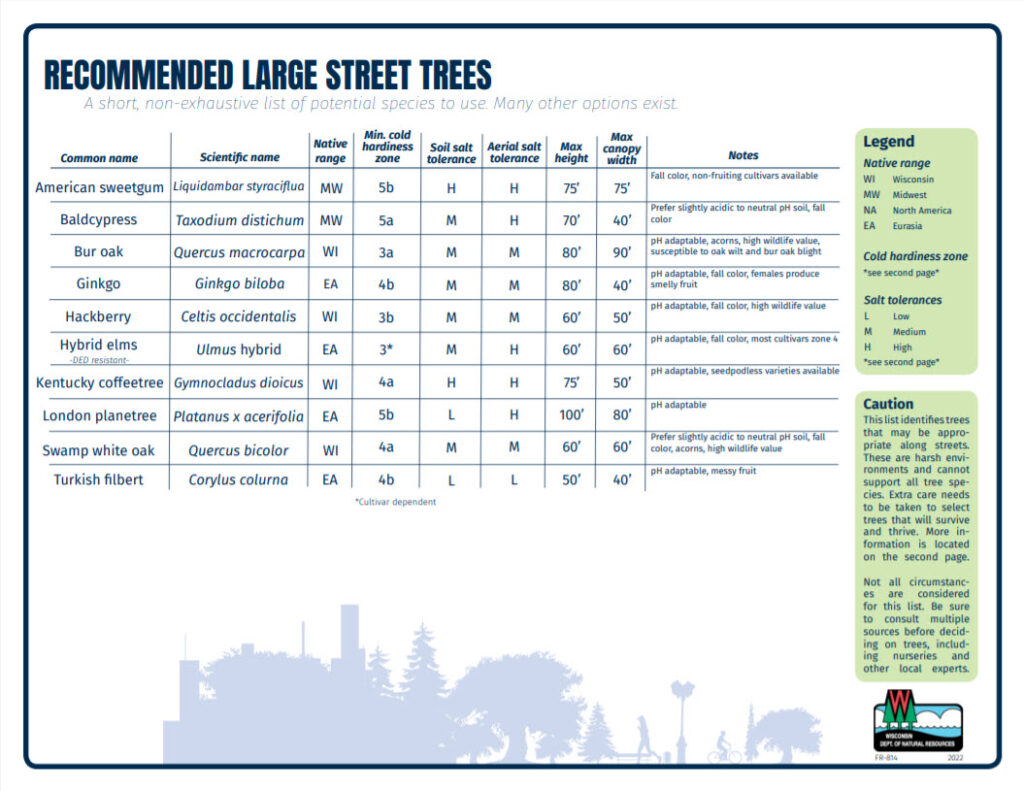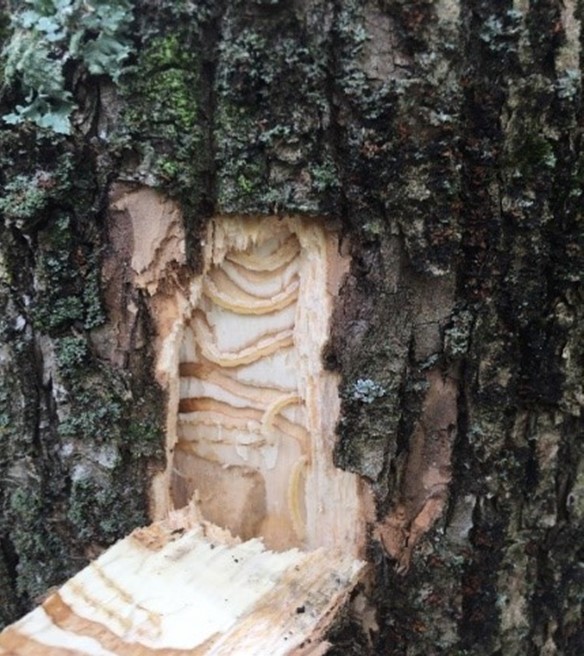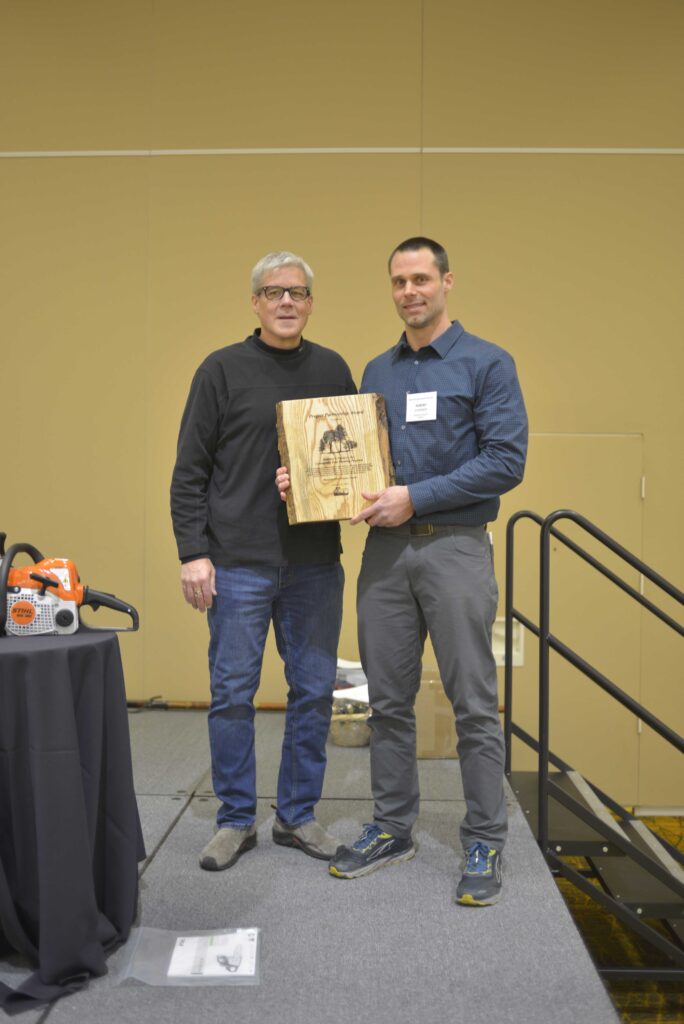 If you’re reading this, you love trees and have no doubt been asked for your tree species recommendations. The Wisconsin Department of Natural Resources (DNR) Urban Forestry Program is no different. Because species recommendations are an evergreen request, we developed four lists, accounting for a small number of large and small trees in street and park environments.
If you’re reading this, you love trees and have no doubt been asked for your tree species recommendations. The Wisconsin Department of Natural Resources (DNR) Urban Forestry Program is no different. Because species recommendations are an evergreen request, we developed four lists, accounting for a small number of large and small trees in street and park environments.
These lists are not exhaustive (only ten species in each) and any general list of recommendations is somewhat fraught with uncertainty due to the nuanced conditions of specific planting sites. We highly suggest consulting with your local nurseries and other experts who can not only discuss what is available but also provide other recommendations and planting advice. With just a few exceptions, these lists do not include cultivars and varieties, but your local experts can provide that amount of detail.


 There’s a beloved Calvin and Hobbes strip in which the famous duo unearths routine items (rocks, roots, grubs) while digging a hole, but are nonetheless awestruck by what they found, exclaiming “there’s treasure everywhere!”
There’s a beloved Calvin and Hobbes strip in which the famous duo unearths routine items (rocks, roots, grubs) while digging a hole, but are nonetheless awestruck by what they found, exclaiming “there’s treasure everywhere!” How many sugar maple trees grow in our urban areas? Which species are exhibiting health declines? How many logs can be produced from removed ash trees? What is the carbon storage of urban forests? Where are invasive species most prevalent?
How many sugar maple trees grow in our urban areas? Which species are exhibiting health declines? How many logs can be produced from removed ash trees? What is the carbon storage of urban forests? Where are invasive species most prevalent?
 The Wisconsin Urban Forestry Council recently announced their annual awards honoring those dedicated to protecting, preserving and increasing the number of trees that line city streets, fill community parks and enhance neighborhoods throughout the state.
The Wisconsin Urban Forestry Council recently announced their annual awards honoring those dedicated to protecting, preserving and increasing the number of trees that line city streets, fill community parks and enhance neighborhoods throughout the state.